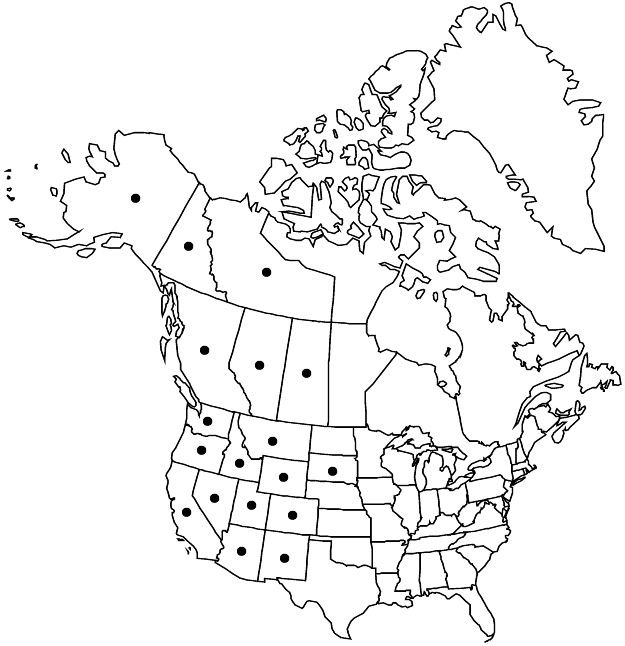Difference between revisions of "Sorbus scopulina"
Pittonia 4: 130. 1900.
FNA>Volume Importer |
FNA>Volume Importer |
||
| Line 65: | Line 65: | ||
|publication year=1900 | |publication year=1900 | ||
|special status= | |special status= | ||
| − | |source xml=https://jpend@bitbucket.org/aafc-mbb/fna-data-curation.git/src/ | + | |source xml=https://jpend@bitbucket.org/aafc-mbb/fna-data-curation.git/src/f6b125a955440c0872999024f038d74684f65921/coarse_grained_fna_xml/V9/V9_744.xml |
|subfamily=Rosaceae subfam. Amygdaloideae | |subfamily=Rosaceae subfam. Amygdaloideae | ||
|tribe=Rosaceae tribe Gillenieae | |tribe=Rosaceae tribe Gillenieae | ||
Revision as of 20:38, 24 September 2019
Shrubs, 10–50(–80) dm. Stems 1–8; bark gray, sometimes yellowish or reddish purple, or grayish red; winter buds olive brown to red-brown, conic, 8–14 mm, shiny, slightly glutinous, glabrous or sparsely or densely whitish-villous. Leaves pinnately compound; stipules deciduous or persistent, hairs whitish; blade paler abaxially, shiny, green to dark green adaxially, leaflets 7–13(–15), opposite or subopposite, lanceolate, oblong, narrowly ovate, oblanceolate, or obovate, (3–)4–6.5(–8.7) × 1.5–2.7 cm, l/w ratio 2.1–4.4, margins finely serrate, apex obtuse, acute, or acuminate, surfaces glabrous, leaf and leaflet axils hairy, hairs whitish. Panicles 40–200+-flowered, flat-topped to rounded, 5–15 cm diam.; peduncles sparsely to densely whitish-villous. Pedicels sparsely to densely whitish-villous (in flower and fruit). Flowers 11–13 mm diam.; hypanthium nearly glabrous or densely villous, hypanthium plus sepals 3–4 mm; sepals 0.8–2.3 mm, margins lightly to densely whitish-villous, glands absent or sparse and usually inconspicuous; petals white, ovate, 4–6 mm; stamens (14–)20; carpels distinct, apex conic, styles 3 or 4, 2–2.5 mm. Infructescences whitish-villous, rarely glabrous with age. Pomes bright orange to reddish orange, globose, subglobose, broadly obovoid, or broadly elliptic, 8–12.1 × 7.5–12.8 mm, shiny, sometimes lightly glaucous; sepals inconspicuous, incurved. Seeds brown, narrowly ovoid, 3.8–5.4 × 1.7–2.8 mm, slightly asymmetric, slightly flattened. 2n = 34, 68.
Phenology: Flowering spring; fruiting fall.
Habitat: Mountain slopes, open forests, forest edges, riparian zones, lakeshores
Elevation: 0–3300 m
Distribution

Alta., B.C., N.W.T., Sask., Yukon, Alaska, Ariz., Calif., Colo., Idaho, Mont., Nev., N.Mex., Oreg., S.Dak., Utah, Wash., Wyo.
Discussion
Sorbus scopulina is variable, especially in leaflet shape, number, and indument. Plants with narrower leaflets were separated as S. angustifolia; plants with broader leaflets were segregated as S. andersonii and S. cascadensis. Densely hairy forms were named S. dumosa. All represent points on a morphologic continuum, united by their shiny leaflets, whitish indument, and western range. Sparsely hairy forms approach the more southern S. californica but have whitish axillary hairs and larger leaflets than that species, which has rufous axillary hairs and leaflets less than 4 cm. Most S. scopulina have shiny hypanthia and fruits. Occasional collections, all within the range of S. sitchensis, are glaucous-fruited. This may be natural variation, or it could represent introgression from S. sitchensis. H. A. McAllister (2005, pers. comm.) found that individuals of S. scopulina from cordilleran Idaho and Arizona were sexual diploids; plants from the Cascade and Coast ranges of British Columbia and Washington were tetraploid and presumably apomictic. Here, these entities are synonymized, awaiting a larger study that might correlate distinct morphologic characteristics with the ploidy levels. J. J. Aldasoro et al. (1998, 2004) noted that some European Sorbus species are both diploid and tetraploid, suggesting that sexual species occasionally produce spontaneous agamospermous individuals.
The intergeneric hybrid ×Amelasorbus jackii Rehder [Amelanchier alnifolia (Nuttall) Nuttall ex M. Roemer × Sorbus scopulina] has been collected in Idaho and Oregon. Foliage of the Idaho collection is very similar to that of Amelanchier, with basal pinnae inconspicuous and infrequent, suggesting that this hybrid may be overlooked.
The illegitimate later homonym Sorbus alaskana G. N. Jones pertains here.
Selected References
None.